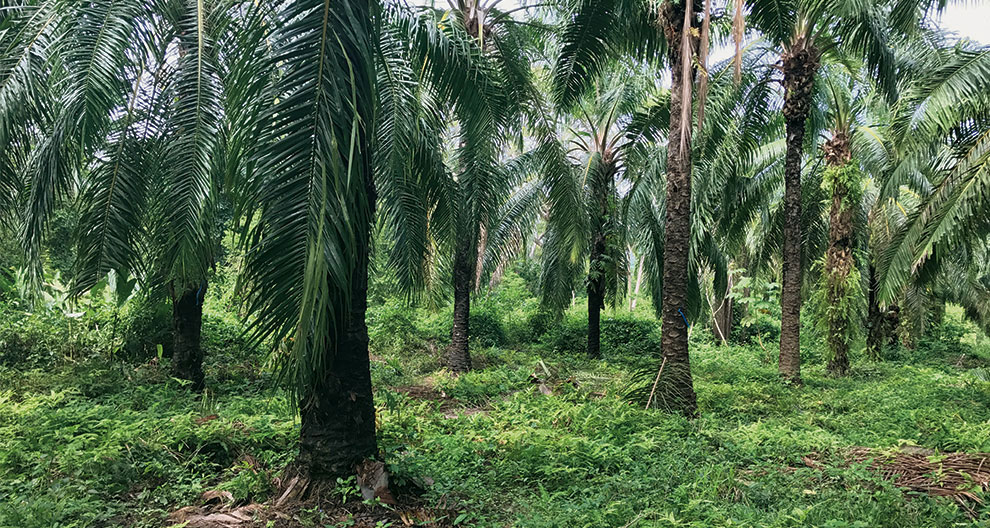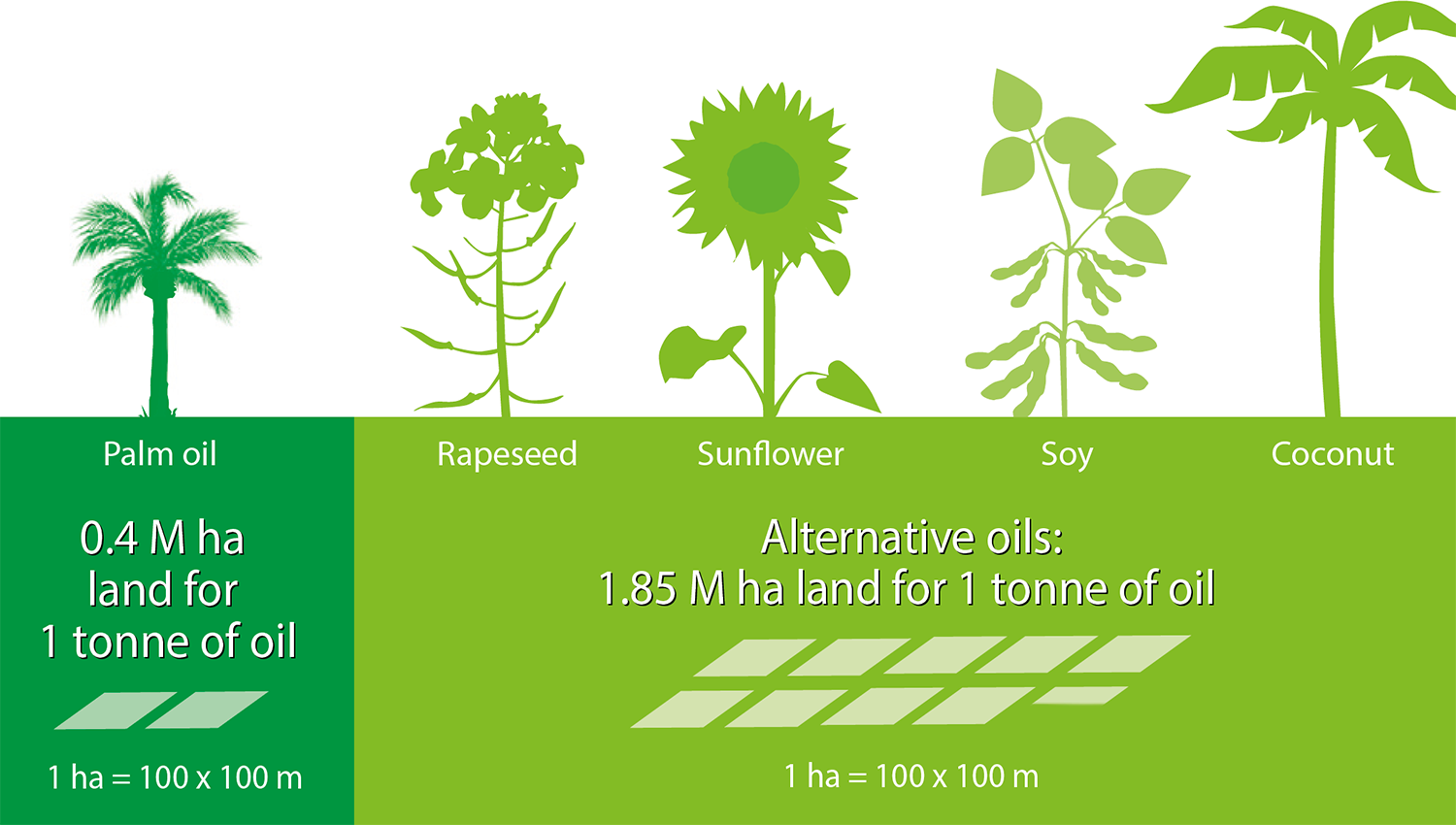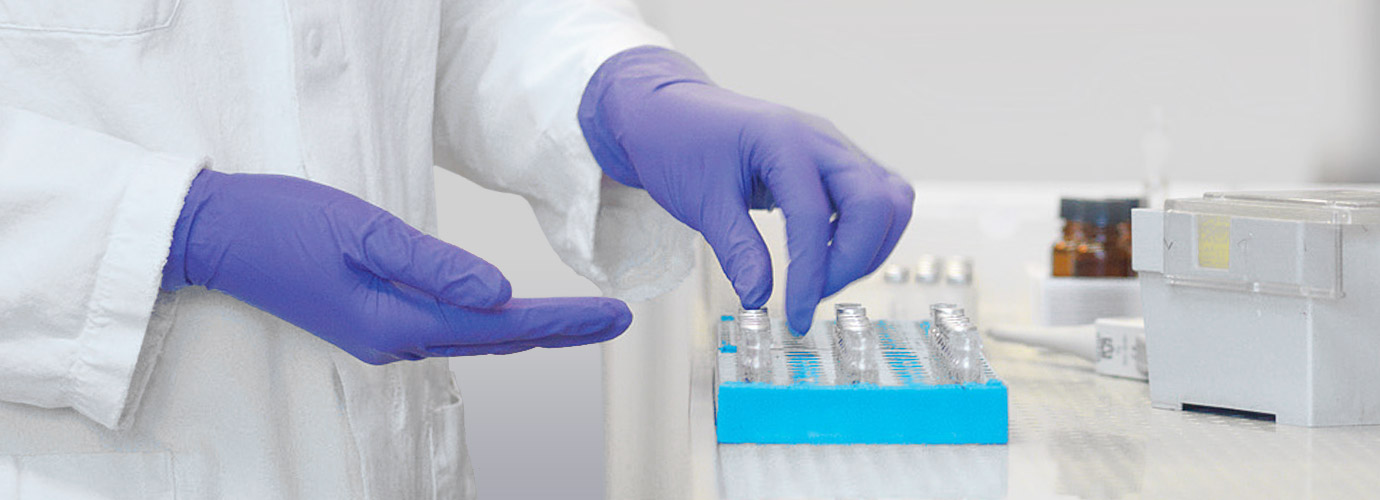Palm oil is the most widely used vegetable oil in the food industry. However, consumers are frequently exposed to media reports highlighting jungle deforestation for oil palm cultivation in Southeast Asia. Very few are aware of the fact that the use of palm oil in infant formulae has nutritional reasons and that it can also be a very sustainable oil, provided that it is produced in an ecological and fair manner.
HiPP organic Palm Oil – from fair and sustainable production

Why is Palm Oil used?
- To obtain a fatty acid spectrum close to that of breast milk, infant formulae are made with a mix of vegetable oils.
- Palm oil is the only vegetable oil that is rich in palmitic acid (32-57%).
- Palmitic acid is the predominant saturated fatty acid in breast milk (approx. 24% of the total fatty acids).1, 2, 3, 4
- To best replicate the fatty acid spectrum of breast milk, it makes sense to use palm oil as palmitic acid source.
- Published reports5 indicate that an adequate palmitic acid content is important for good tolerability (stool parameters):
– more yellowy stools (similar to those of breastfed children)
– less watery stools
ESPGHAN* confirms that palm oil is suitable for use in infant formulae6
HiPP organic Palm Oil – from fair and sustainable production
- From 100% sustainable sources.
- No rainforest is cleared for the cultivation of HiPP’s oil palms. Instead, they are planted on old pastures and farmland, where we also make sure that they are not grown in a monoculture.
- HiPP’s palm fields are farmed organically and mostly by local smallholders.
- Our HiPP palm cultivation is organic certified.
Did you know?
Palm Oil requires the least amount of land compared to other oil fruits.

Conclusion:
Palm oil is used in HiPP organic infant formulae to best replicate the fatty acid spectrum of breast milk. HiPP uses the safest top-quality organic palm oil from sustainable sources.
References:
1Breastfeeding: A Guide for the Medical Profession, 8th edition. Elsevier, Saunders, Mosby, Churchill, 2016
2Nutrition in Pediatrics: Basic Science, Clinical Applications. Volume 1, 2016
3EFSA. The EFSA Journal 2014; 12(7):3760
4Lee et al. „https://www.ncbi.nlm.nih.gov/pmc/articles/PMC6232911/“ Front Pediatr. 2018; 6: 313
5Lloyd B et al. Pediatrics 1999; 103(1):e7
6Bronsky J et al. J Paediatr Gastroenterol Nutr 2019; Epub ahead of print
*ESPGHAN - European Society for Paediatric Gastroenterology, Hepatology and Nutrition



